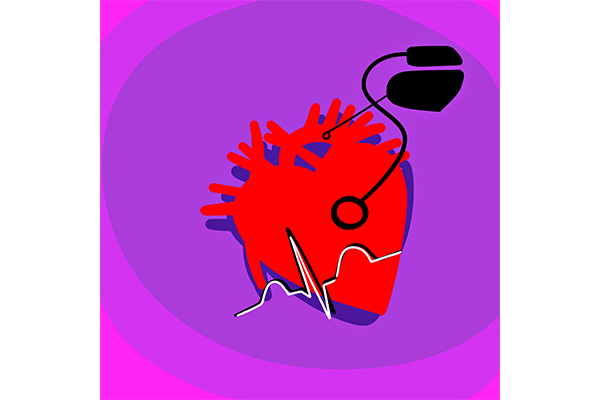A new type of blood flow measurement technology can improve the safety of implantable defibrillators by reducing the number of unnecessary shocks to the heart.
Lucas Holt, a UT postdoctoral researcher who worked on the project, said if incorporated into current implantable defibrillators, this new technology would allow them to be more accurate by measuring both blood flow and electrical activity from the heart.
The results were presented at a conference at the American College of Cardiology on March 17.
Implantable defibrillators are a type of pacemaker with a defibrillation, or shocking feature, in them and are used in patients with arrhythmogenic hearts, or hearts prone to having an irregular beat, Holt said.
“When these patients have an arrhythmia, these implantable devices will automatically shock the heart and bring it back to a normal rhythm,” Holt said. “Currently, these devices only measure electrical activity to determine if a person has an arrhythmia that is life-threatening.”
An arrhythmia is considered life-threatening only if it causes the patient to not have enough blood flowing to vital organs and if blood pressure is abnormal, Holt said.
In a hospital, physicians can actively measure a patient’s blood pressure to determine if an arrhythmia is life-threatening, said Thomas Kurian, a cardiologist at Dell Seton Medical Center.
“If the blood pressure was unstable, they would give (the patient) a shock,” Kurian said. “If the blood pressure was stable, they would not shock (the patient). They would give (the patient) drugs and medication to try and get (the patient) out of the arrhythmia.”
However, since current implantable defibrillators only detect electrical activity, they cannot differentiate between stable and unstable arrhythmias, Kurian said.
This can cause false positives, where the implantable defibrillator delivers an unnecessary shock to the heart, Kurian said.
“We want to be cautious and only shock when necessary,” Kurian said. “The more shocks a patient receives from a defibrillator, the more adverse effects there are to heart function over a long run.”
Holt said false negatives also need to be avoided. These occur when a person needed to be shocked and did not receive it, causing death, Holt said. His team’s work will seek to reduce both false positives and false negatives by adding blood flow measurement to the implantable defibrillator, he said.
Holt said the device can specifically measure stroke volume, or how much blood the heart pumps in one beat, and cardiac output, or how much blood the heart pumps in liters per minute.
The researchers conducted a pre-clinical study on large animals with heart failure and showed the device’s measurements of blood flow in the heart were comparable to clinically-accepted methods of measuring blood flow, Holt said.
The next step in the project is to embed the device into a pacemaker, said Jonathan Valvano, a researcher on the project and professor in electrical and computer engineering.
“We hope to partner with a pacemaker company to study our device in patients,” Valvano said. “We also want to explore the application of having multiple sites of measurements in our device to increase reliability.”





















